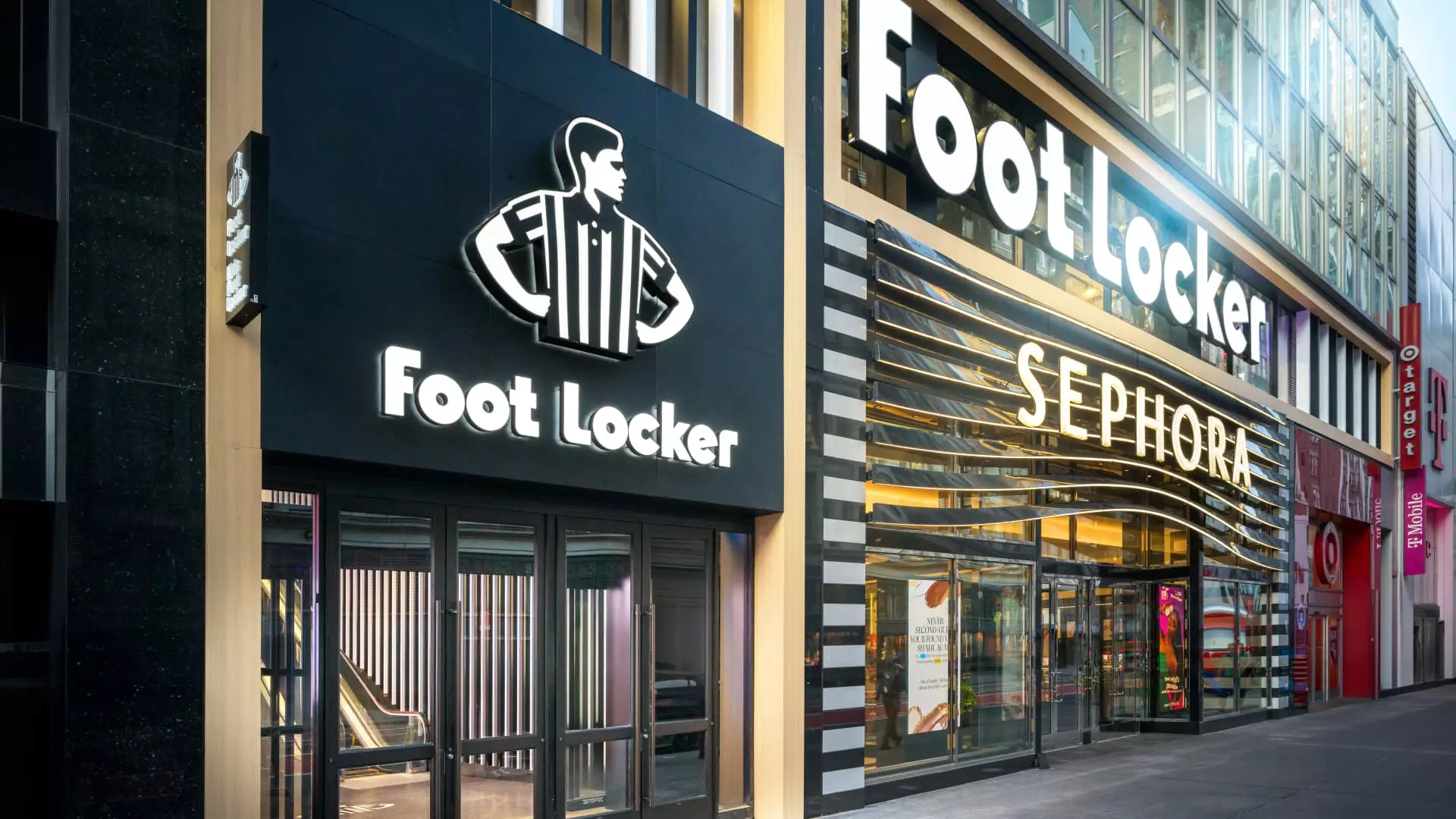Foot Locker’s recent financial performance raises eyebrows not only within its own organization but also among industry observers. On Wednesday, following the release of its third-quarter results, the company significantly reduced its full-year guidance. This development sends a concerning message, particularly regarding its relationship with Nike, the retailer’s largest brand partner, which constitutes approximately 60% of Foot Locker’s sales. A notable decline in demand and excessive promotional activities are to blame, potentially signaling that both companies are grappling with the same issues manifesting differently in their respective performance metrics.
Such drastic measures imply substantial challenges on the horizon. The company reported a third-quarter loss of $33 million, or 34 cents per share, which translates to a stark contrast compared to the previous year’s profit of $28 million, or 30 cents per share. Additionally, Foot Locker fell short of Wall Street expectations, with revenues amounting to $1.96 billion against anticipated figures of $2.01 billion. The failure to meet these benchmarks led to a 15% drop in the company’s shares during premarket trading—a clear indication of investor anxiety.
Foot Locker’s CEO, Mary Dillon, highlighted a significant change in consumer behavior: while customers are enthusiastic during key shopping events, such as back-to-school promotions and the Thanksgiving to Cyber Monday period, their engagement diminishes sharply in between these peaks. This erratic interest complicates planning and forecasting for the retailer. Dillon’s observations confirm a broader theme that many retailers will likely find familiar—a struggle to maintain steady demand in a fluctuating marketplace.
Central to Foot Locker’s difficulties is the performance of Nike, which recently appointed a new CEO, Elliott Hill, who is yet to reveal his strategic vision. The reliance on familiar styles without adequate innovation has led to softer consumer engagement. Foot Locker, in unpacking the implications of this partnership, must navigate a dual challenge: rekindling interest in Nike products while also appealing to a consumer base that tends to be lower-income amid ongoing economic pressures.
The retailer’s revision of its fiscal guidance underscores a grim outlook for the upcoming holiday season, with sales expected to decline between 1.5% and 3.5%. Comparatively, previous assumptions indicated a modest growth of about 2% during last year’s festive period. Such adjustments reflect a broader industry trend toward cautious consumer discretionary spending, which is likely to resonate throughout various sectors.
Moreover, the revisions extend to the expected comparable sales growth, which has now been reduced to a projection of 1% to 1.5%, falling short of analysts’ earlier expectations of 1.8%. These predictive adjustments serve as both a warning and a harbinger of potential challenges ahead, especially as Foot Locker contemplates the ramifications of decreased sales performance and how its partnership with Nike will evolve moving forward.
Despite these obstacles, Dillon’s remarks provide a glimmer of hope. Foot Locker managed to achieve a 2.4% increase in comparable sales, though still trailed behind analyst expectations. Noteworthy improvements were also recorded at both Champs and WSS, marking a positive trend that indicates that Foot Locker’s strategies, although under duress, are starting to yield some results. Furthermore, a 2.3 percentage point improvement in gross margins signifies broader operational efficiencies on a tactical level.
Dillon remains optimistic about the ongoing store refurbishment programs, believing that these long-term projects will help bolster performance even amidst external pressures. This duality of facing immediate challenges while planting the seeds for future success is critical. The image she paints presents a company at a crossroads, where opportunities for rejuvenation exist alongside looming caution advised by analysts.
Foot Locker’s current predicament reveals the difficulties faced by retailers in an unpredictable marketplace, characterized by shifting consumer preferences and deep reliance on major brand partners like Nike. With challenges no longer confined to internal metrics, a holistic understanding of market dynamics has become imperatively necessary for management strategies.
As the retail landscape continues to evolve, Foot Locker must not only adapt its approach to consumer behavior but also ensure that its partnerships—especially with Nike—provide a mutual pathway for growth. The potential for revitalization exists within Foot Locker’s operational strategies; however, realizing this potential will demand astute navigation through the uncertain waters that lie ahead. The forthcoming months will likely be a test of both tenacity and adaptability for Foot Locker, as it strives to align itself with a recovering consumer landscape while fostering critical partnerships that can reinvigorate its brand offering in the competitive marketplace.

